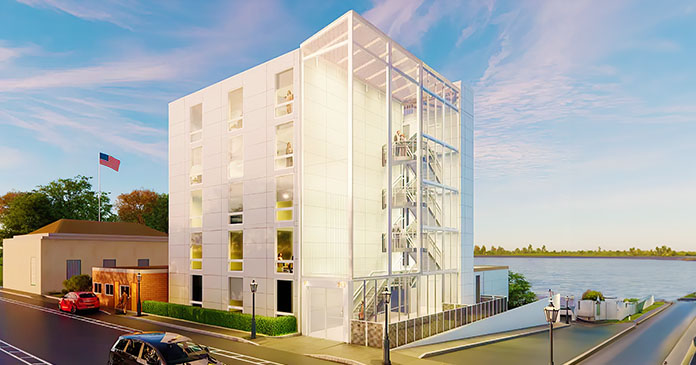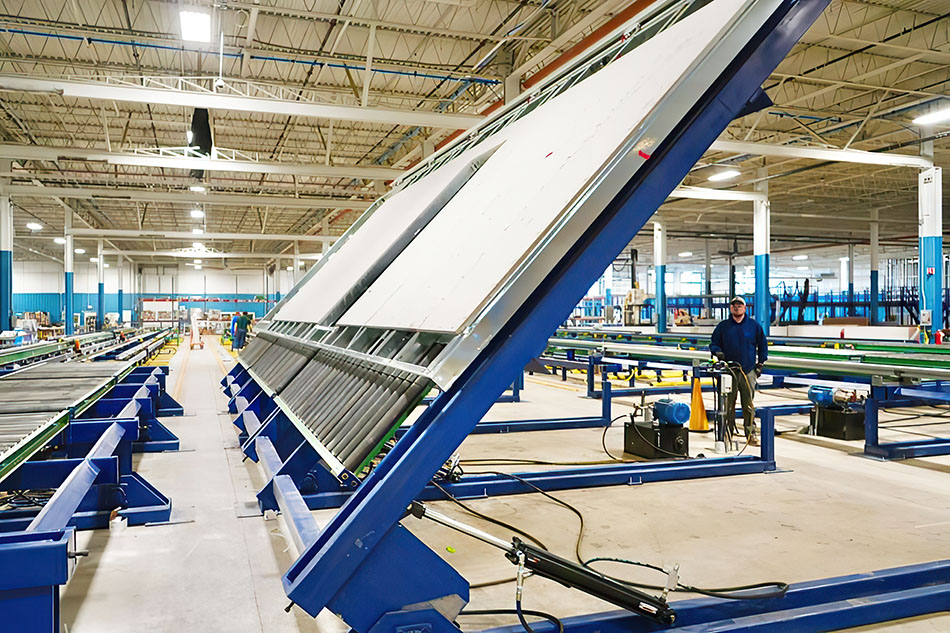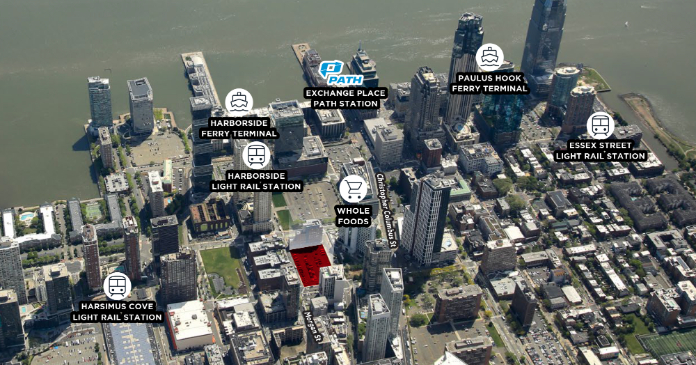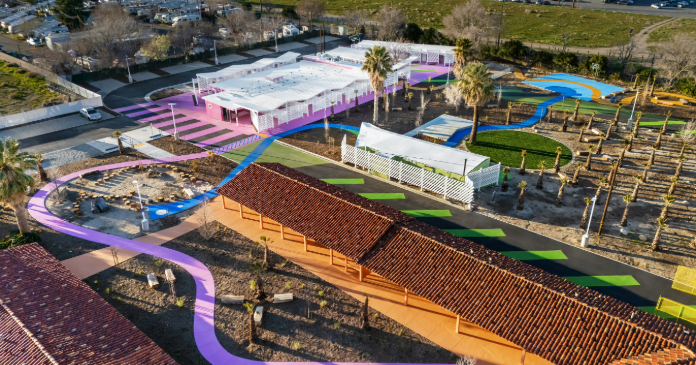
It’s no secret that housing costs have gone up in the last few decades—a lot. Buying a home has become extremely expensive in many cities around the country, and with ongoing high interest rates, it’s led many people to postpone buying a home and continue to rent. But that’s become hard to afford too, rental prices skyrocketed throughout 2021 and early 2022.
All of this has led to a housing market that’s become more unaffordable than ever for low-income households, and increasingly, even middle-class income ones. Multifamily developers are aware of this, and for some time have been targeting a void in the market for what’s been dubbed workforce housing.
Now, a growing number of companies are describing this segment as “attainable housing.” In a nutshell, it’s rental apartments for Americans somewhere in the middle: earning enough that they don’t qualify for subsidized or low-income housing, but not enough to afford most market-rate rentals.
A once-overlooked market segment of housing designed and operated just for this demographic has become a popular product.
In recent years, many have discussed the need for more middle-income housing. Industry groups and housing experts have pointed to the need for affordable multifamily housing in pricey markets for people working the jobs that are crucial to society, like firefighters, nurses, and teachers.
In determining affordability for workforce or middle-income housing, the rule of thumb often used is households earning between 80 percent and 120 percent of area median income (AMI). These households typically earn too much to qualify for HUD programs but would struggle to afford decent market-rate apartments.
In response, housing developers have gotten to work building multifamily housing aimed at renters somewhere in the middle. The movement has picked up steam, several multifamily development firms are now launching attainable housing divisions.
Greystar, one of the largest apartment operators in the country, recently announced it had launched Ltd. By Greystar, a brand that will build apartment homes specifically for middle-income earners.
One of the country’s largest homebuilders, Lennar, just announced its venture arm’s investment in Vessel Technologies, a startup that builds sustainable rental apartments and bills itself as the industry’s first franchising opportunity. And The Altman Cos., a national multifamily developer and management firm, recently launched a new division focused on affordable and workforce housing.
It’s easy to see why companies are tapping into this demographic. Housing is getting more expensive across all income levels, but it’s hitting certain portions the hardest.
In Harvard University’s Joint Center For Housing Studies’ annual State of the Nation’s Housing 2023 report, researchers found that middle-income renters are feeling the sting of rising rents. In 2021, across all income levels, middle-income renter households were the demographic that experienced the largest uptick in cost-burden rates.
Bigger cities are the areas experiencing the most cost burden. In metropolitan areas, half of renters were cost-burdened in 2021. “The changing characteristics and geography of new rental construction have shifted the distribution of rents, reducing the share of units available to households with low and moderate incomes,” researchers wrote. “So, while multifamily rental construction is at a decades-long peak, the high asking rents of new units make them unaffordable for many households.”
Policymakers seem to be paying more attention to the affordable housing crisis. In May of this year, the Biden Administration announced an action plan for boosting the supply of affordable housing, including a proposed $25 billion for grants for the production of affordable housing. Industry groups like NMHC have been making a lot of efforts to tackle the issue.
Some market movement
Last year, multifamily construction starts hit a 36-year high with 529,000 new multifamily units underway, the bulk of which are aimed at higher-income segments. But affordable housing for middle-income families in particular is something that is just now beginning to pick up steam.
“When I started my career 30 years ago, the topic of affordable housing was usually limited to really lower-income clientele, industries, and jobs,” said Albert Milo, president of the affordable housing division of development firm the Related Group. “Now, it’s diametrically different. Most areas of the country are talking about teachers, police officers, nurses, professionals struggling to find housing that is affordable for their income.”
While the need and demand for this kind of housing is clear, financing these kinds of projects is one of the biggest hurdles. Multifamily lenders have pulled back amid today’s worsening economic conditions, and even if a developer is able to obtain financing, interest rates are still stubbornly high.
Not to mention steep construction costs and a labor shortage, issues that have plagued the industry the last few years. But while financing for affordable housing developments is extremely competitive at the moment, leaders at The Altman Cos. are feeling confident that industry experience will pay off.
David Schultz, CEO of The Altman Cos., has decades of experience in the affordable housing industry and is well-versed in securing low-income financing for projects. “We will be working primarily with the low-income housing tax credit program and other state/local tax incentives that are available to developers to encourage them to develop affordable housing,” Schultz said.
The Altman Cos. is planning to target areas throughout the Mid-Atlantic and Florida, in areas with high employment and large populations that have the greatest need for affordable housing.

New brands, new method
With its new brand, Greystar is partnering with a modular construction firm, Modern Living Solutions, which manufactures sustainable, pre-fab apartment units. Part of the way it keeps units more affordable is by curbing rent increases. Greystar Ltd. developments will not increase rents for tenants more than the greater of CPI or 3 percent, according to the firm. Greystar’s CEO Bob Faith said the catalyst for the Ltd. brand came from a large multifamily project Greystar developed in the Netherlands.
In that project, where rents are regulated through the Netherlands’ point system, the company was able to build the project profitably while still setting rents below market.
Due to a housing shortage and huge demand, the project leased up in just a few days. Using modular construction, standardized floor plans, and a revamped operating model is what has enabled Greystar to keep rents lower than market-rate while still generating the same level of returns for investors as market-rate units would, Faith said. It’s an approach that could likely be replicated by other large multifamily developers.
Units in these Ltd. properties, which are underway in Houston, Orlando, Pennsylvania, and Maryland, will look a lot like new market-rate developments. The developments will have efficient HVAC systems, windows, and water heaters, and will feature amenities like pools, gyms, smart locks, and residents apps.
“What we’re doing with our newly created Ltd. brand is a game-changer for renters who want to live in a Greystar-managed community and for an industry that needs more housing supply,” said Greystar Senior Managing Director Scott Berka.
Building in smart tech
New York-based Vessel Technologies’ housing product will also have luxury-like finishes and amenities and a focus on sustainability. The properties are designed to be able to fit on small lots and have a smaller number of units than larger multifamily developments. Vessel says it uses green materials “when we can,” runs its buildings 100 percent on electricity, and uses roof solar to power its properties. Apartment units were developed with universal design in mind, and include what they call a “Yoga Kitchen,” referring to the flexibility and inclusiveness of the design. Units are also equipped with tech that informs tenants about their electric and water consumption.
In Connecticut, where Vessel is planning several buildings, the company currently has a 30-unit building under construction in the town of New London and is eyeing a similar number of units at other proposed developments. The company has pledged to keep rents affordable to people making less than 80 percent of the AMI for 40 years, which is the criteria to qualify as “affordable” under Connecticut state guidelines. But so far, there has been stiff opposition to the company’s plans.
Vessel has filed two lawsuits recently against wealthy suburbs in the state that have rejected their proposed developments. In its most recent filing against the town of Simsbury, which shot down its plan to build a 64-unit apartment building, “The Simsbury decision reflects the sad but enduring power of the NIMBYism movement in Connecticut’s bedroom communities,” the company said.
The need for more middle-income housing in the United States has become very clear. Property companies are seizing the opportunity to tap into a segment with huge demand and creating brands that they hope will resonate with renters. Though it’s still early, it seems that these projects are so far drawing a strong response from renters.
Like a lot of things in today’s environment, there are financing challenges, but policymakers are making efforts to help get these developments built, with more incentives being rolled out. Whether it’s called attainable housing, workforce housing, or something else, it’s clearly very in demand, could help to ease the housing crisis, and if done right, makes good business sense.
Source Holly Dutten, propmodo.com














